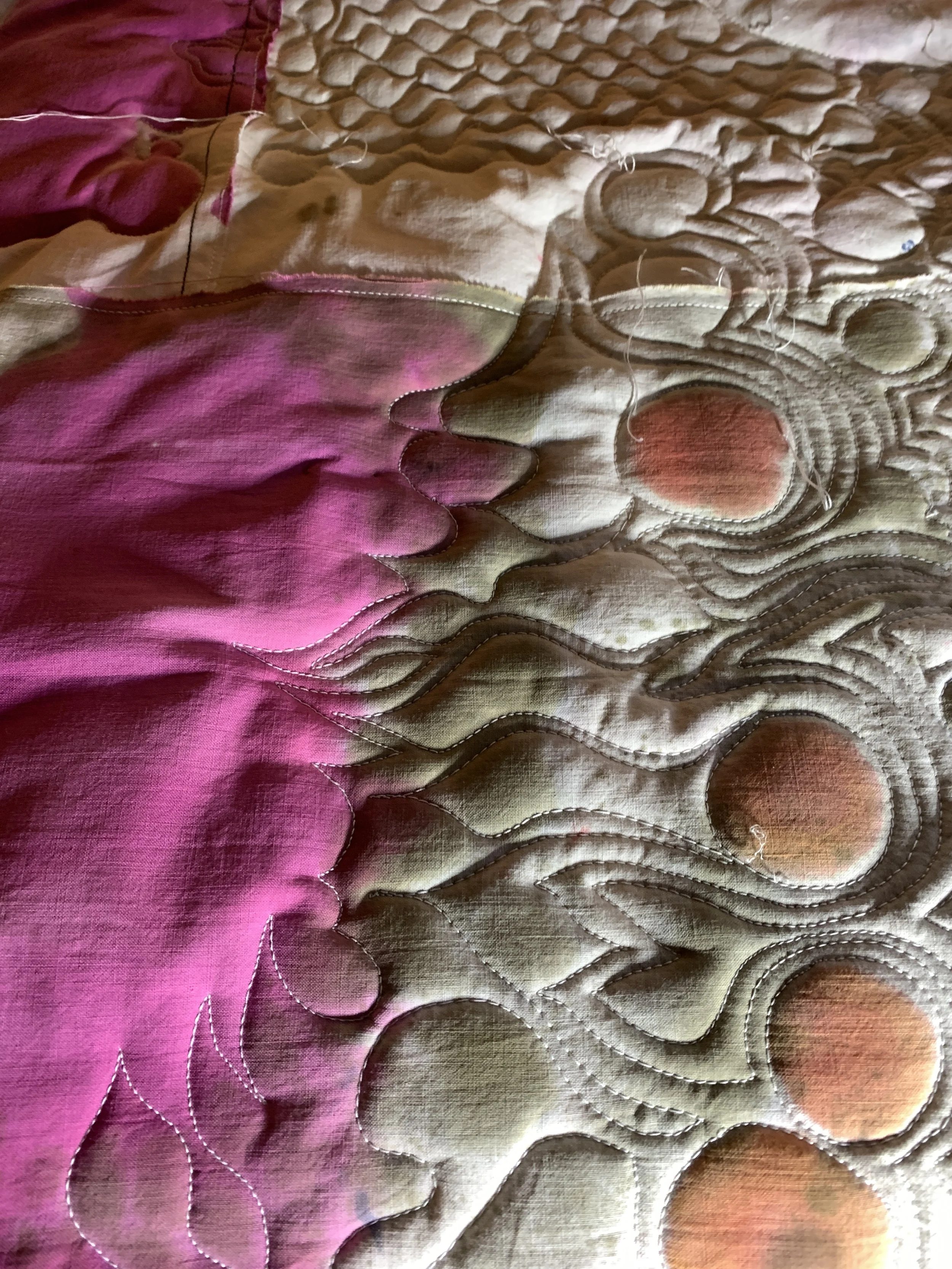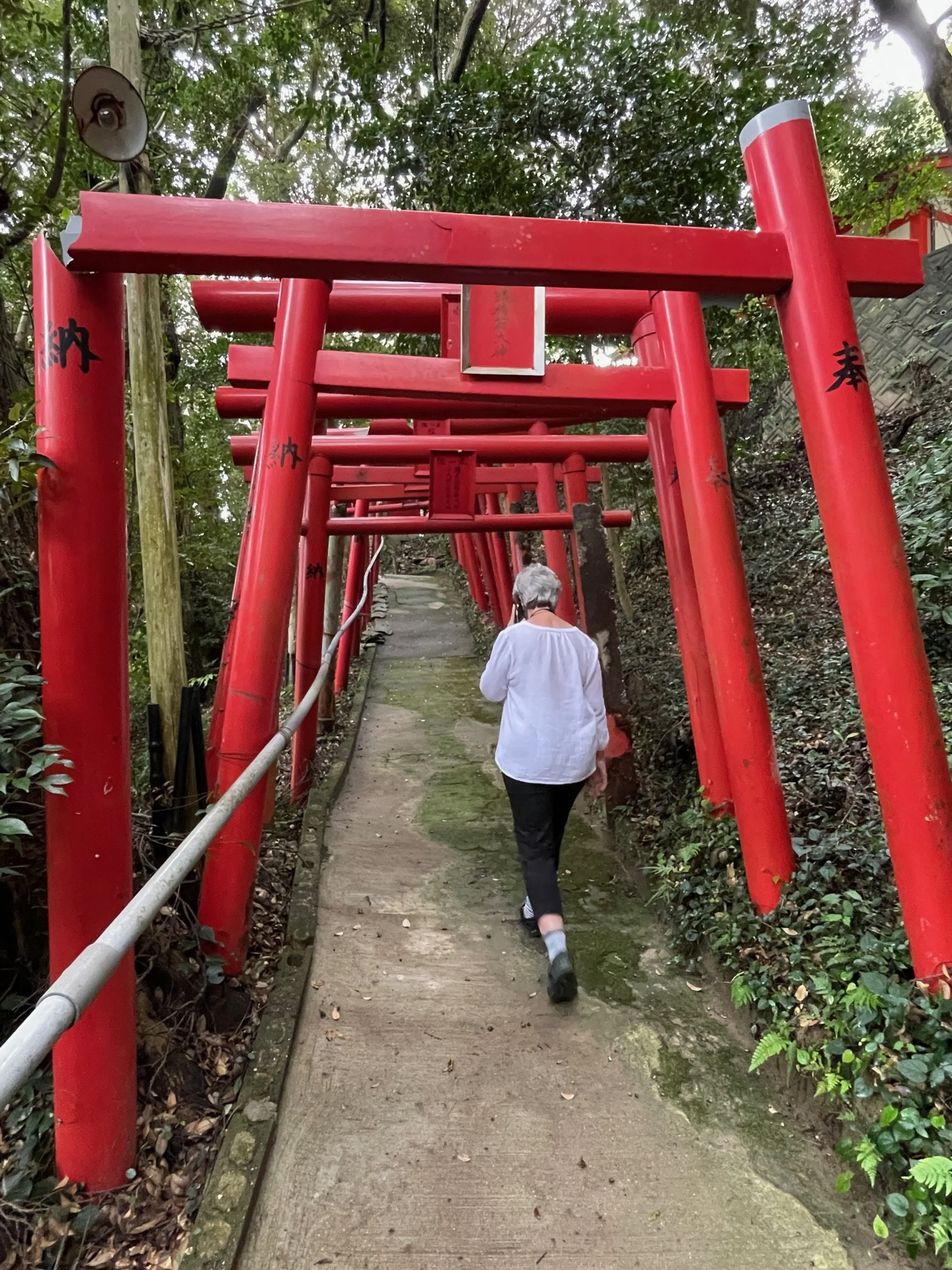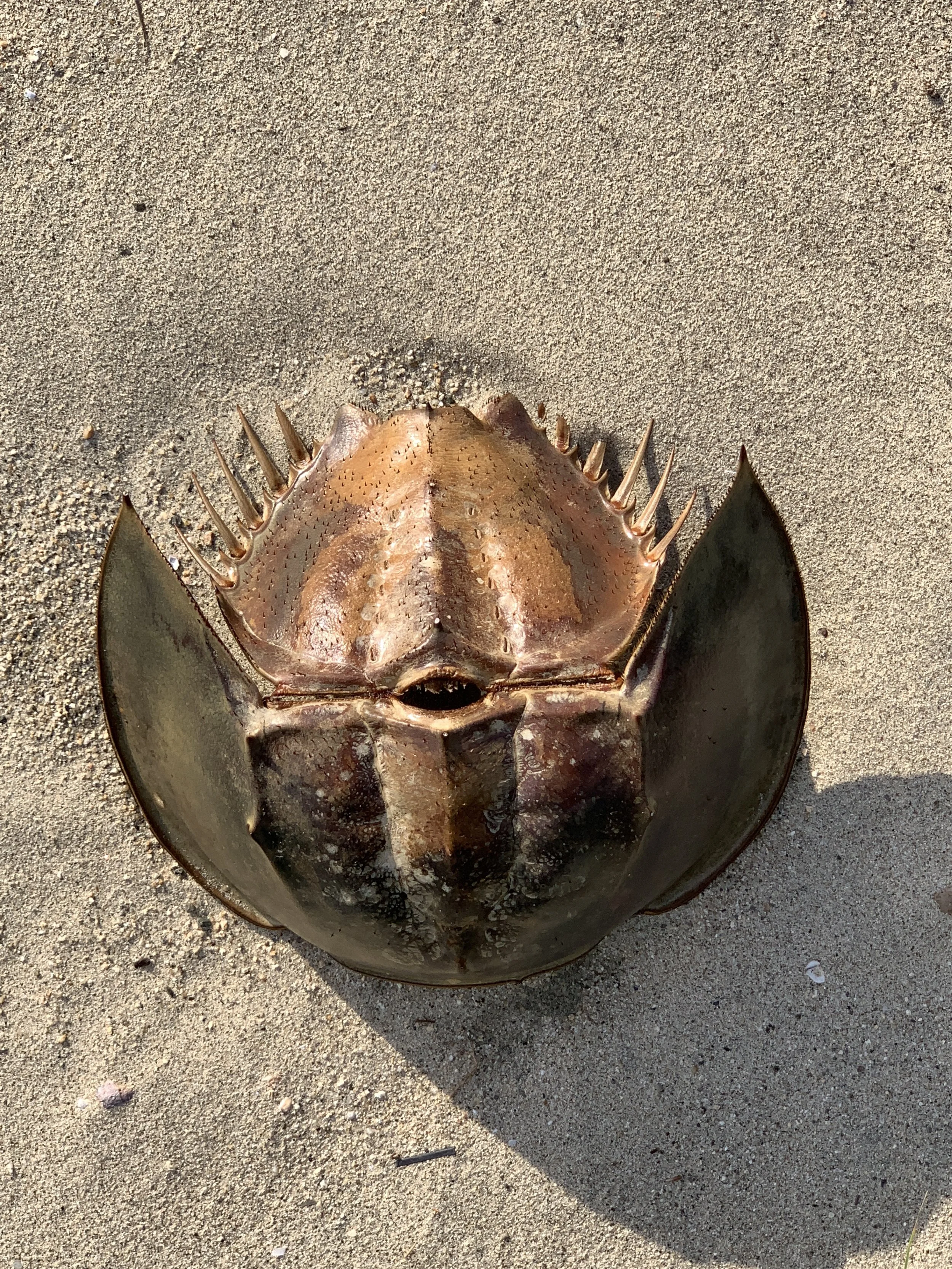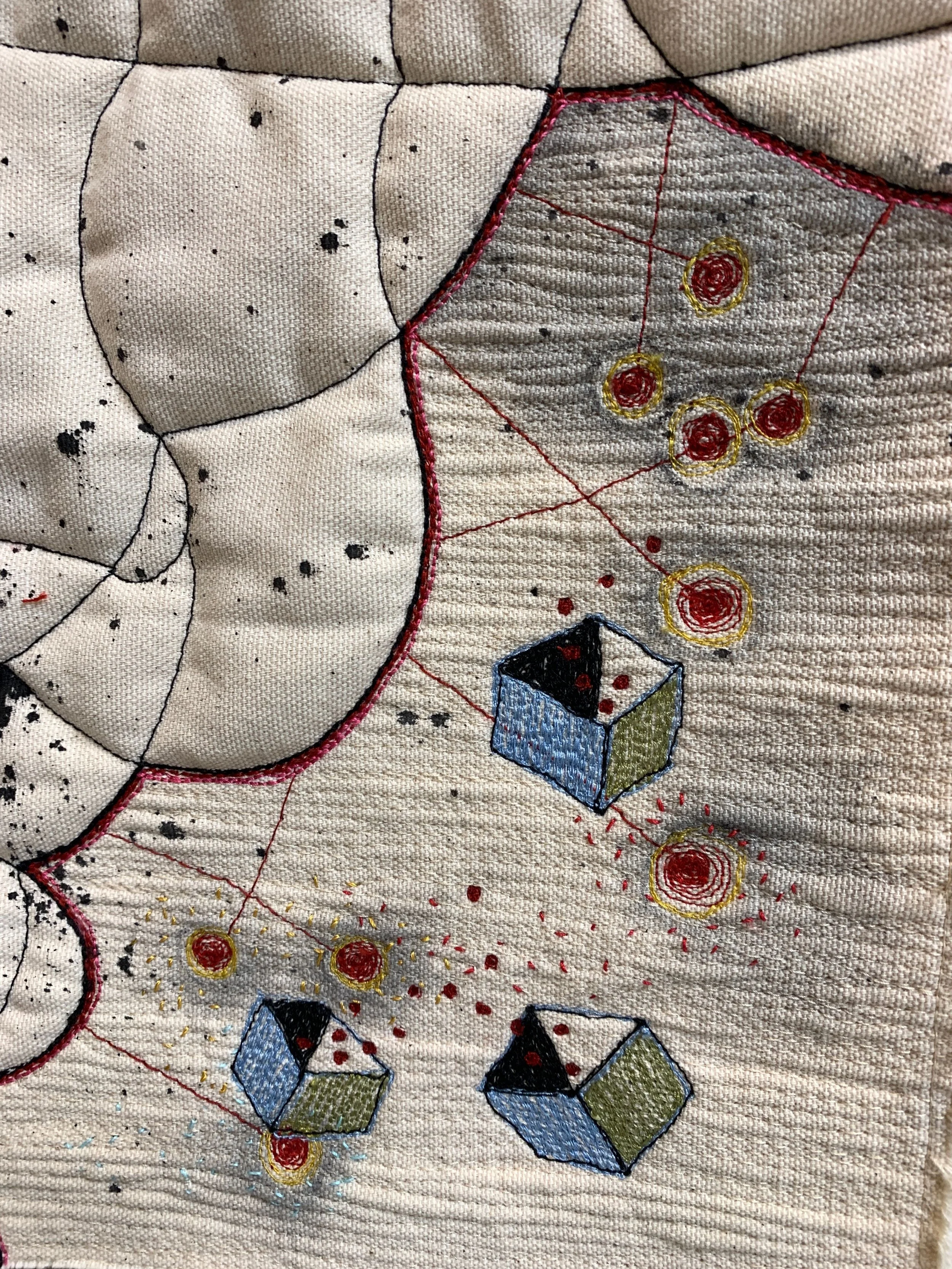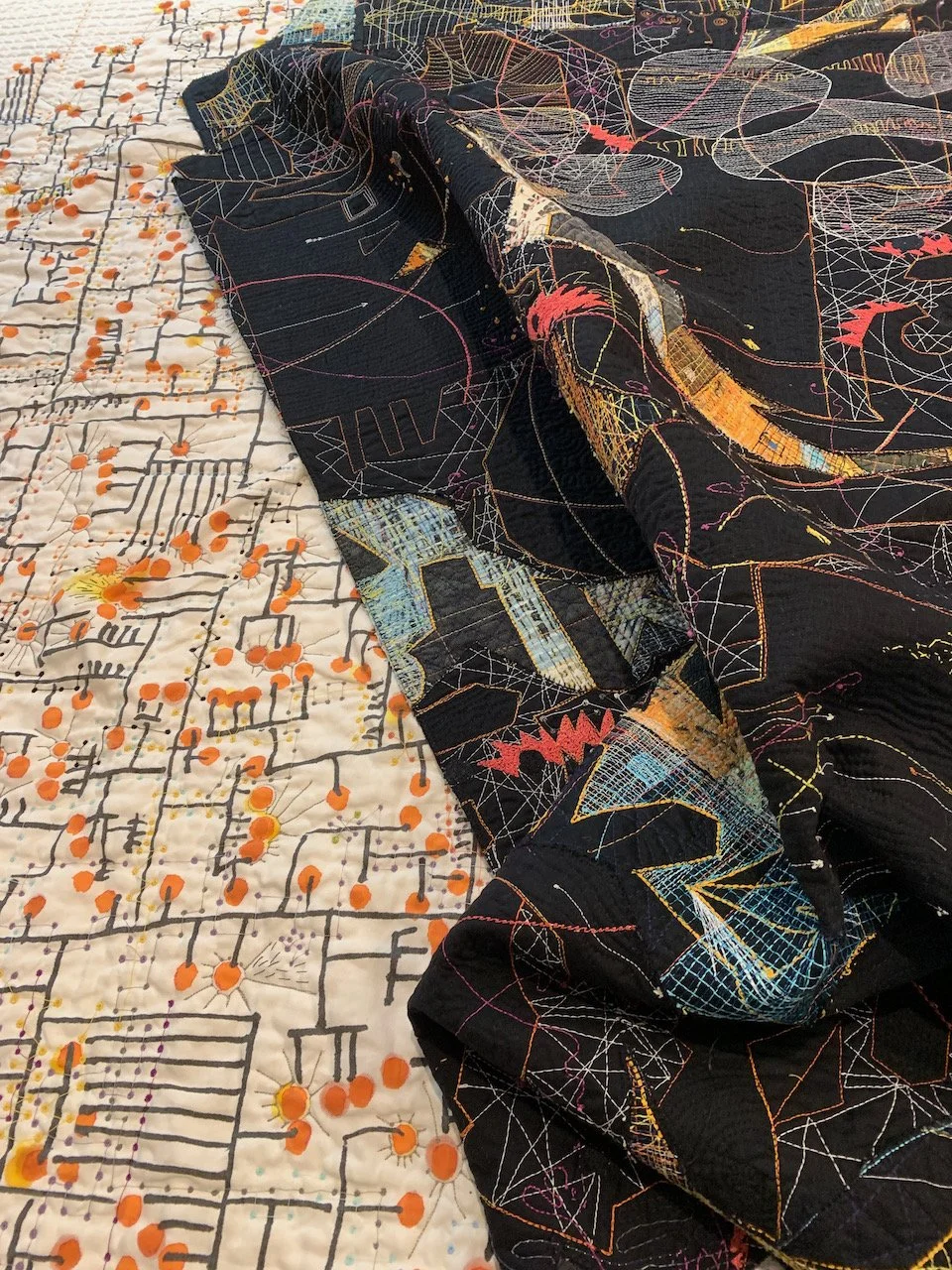It occurred to me this weekend that some pieces have limited life cycles. And others just seem to live on.
Normally I work on a piece because I have to. It is a compelling, urgent need to create. If I am lucky, and the construction and execution satisfies me, the piece ends up in my portfolio. Once there I look for opportunities to show it to others. Through calls for entry, or on my living room wall, the piece needs to speak for itself at that stage. Sometimes it doesn't get a chance. The reasons might be:
- I am just plain worn out after working on it and it has to go into storage before I can look at it again, or
- It doesn't speak for itself without explanation (what was I thinking?), or
- It's too ripe and needs to be sliced into pieces, or
- I can't find a show for it to belong to (this is VERY common), or
- I can see ways I might improve it and it goes into the think-about-it pile.
Other pieces please me so much I have to have them near. This piece I did in 2004 is one of them. It was one of my first art quilts. It has many faults but great presence. The stitching on the back caused bearding which looks like little hairy outgrowths of fuzz in a field of black. It was not intended believe me. The fill stitches in black on black are highly irregular. The piece hangs wonky — a pleasant wonky but nonetheless distracting. It probably won't ever go into a show unless I include it in a solo someday. So it lives on in our TV room warming the wall. And I am pleased with its longevity. I hope it has a long and prosperous life.
Amished, Paula Kovarik, 2004, 85.5" x 60"








